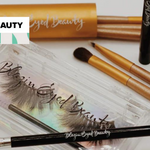Accurately determining your skin type is the only way to get the skin you want and the only way you can take care of it properly. But interestingly enough, from only focusing on trouble spots to misunderstanding terminology, most people tend to make more than a few mistakes when trying to figure out their skin type; here are the four most common mistakes people make.
Misunderstanding The Meaning Of Sensitive Skin
The term sensitive skin is a term that’s often used and abused. And while many people will say they have sensitive skin, they probably don’t. Getting a pimple when you use a new product does not mean you have sensitive skin. It just means that you’ve introduced something new to your skin, and it’s probably reacting accordingly.
True skin sensitivity looks more like rashes, irritation, and redness when you use new products. Without a clear understanding of what sensitivity really means, you could be boxing yourself into a limited skincare routine when you could be enjoying the benefits of a broader routine.
Treating All Blemishes Equally
All bumps and breakouts are not created equally—so they shouldn’t be treated that way.
When you’re dealing with whiteheads, blackheads, pimples, or cysts, each type of blemish is unique and requires a different approach to treatment. Failure to do so can result in a little more than you bargained for, such as blemishes that linger longer than they should and even scaring.
Focusing On Problem Areas Instead Of Their Skin As A Whole
From an oily T-zone to dry patches around your mouth, it’s easy to be hyper-focused on that issue when something is noticeably wrong with your skin. And undoubtedly, when it’s time to address the problem, most people will only address that one problem and forget about the rest of their face. That’s a big no-no; your skin is more than just an oily nose or dry cheeks.
When you’re determining your skin type, creating a new routine, or purchasing new products, it’s important to look at your skin as a whole and treat it accordingly.
Not Knowing The Difference Between Dry And Dehydrated Skin
Most people think that dry skin and dehydrated skin are one and the same, but they’re not, and that makes a big difference when determining your skin type.
Dry skin indicates an absence of (or very little) oil production. The result of which is dry, flaky skin. Easily enough, adding an oil-based moisturizer will remedy the issue.
In contrast, dehydrated skin indicates that there’s little to no water in the skin. Ultimately, dehydrated skin will lead to a tight feeling in the skin (which is easily mistaken for dry skin). And while most people will reach for an oil-based moisturizer, that won’t remedy the issue. Dehydrated skin calls for light water-based products that will restore the water content in your skin, not a product that covers up the issue. In this case, moisturizers and serums that contain hyaluronic acid and glycerin are what your skin needs.








